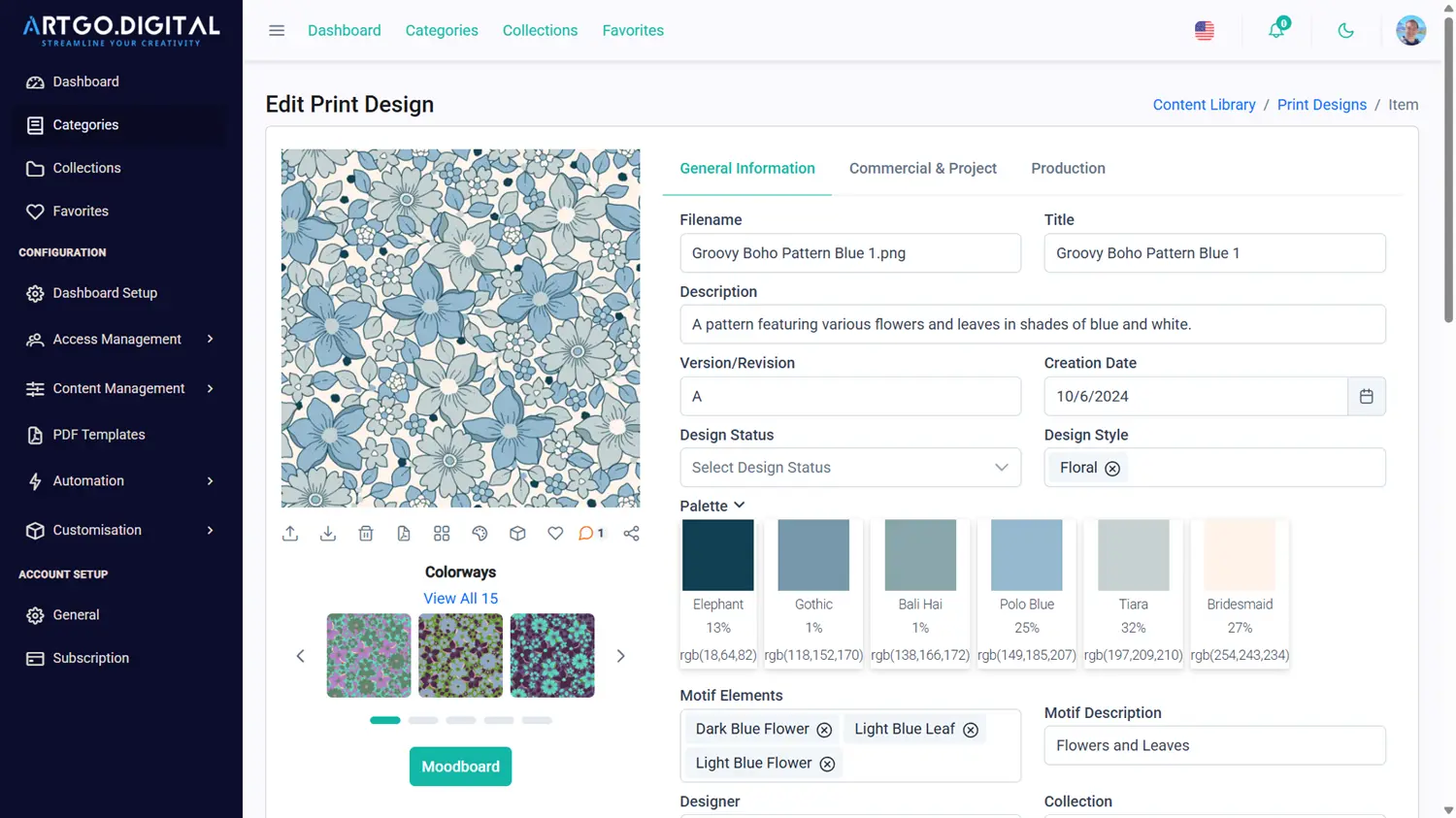Why a cloud design library matters
Design studios move fast. Files live across laptops, USB drives, email, and messaging apps. Teams lose time hunting for the latest version, guessing which folder to trust, or recreating work that already exists. A cloud design library centralizes your assets in one secure place so your team can quickly find, share, and reuse designs with confidence.
Build a structure that scales
Create a simple and predictable information model. Start with a top level for Collections or Projects, then group Designs with their related colorways, moodboards, sketches, and supporting documents such as briefs, tech packs, and specification sheets. Use versions to track progress from concept to production.
- Collections or Projects: seasonal drops, client briefs, internal initiatives
- Designs: master files in high resolution with clear versioning
- Related assets: colorways, moodboards, sketches, CAD exports, PDFs, spreadsheets
- Status and milestones: concept, review, approved, in production, archived
Standardize data with predefined lists
Typing free text leads to typos and duplicates. Replace free text with predefined lists for fields like client, collection, technique, material, category, and color system. This keeps your data clean, eliminates duplicates such as Wool vs. wool, and makes filtering reliable. Add field requirements where needed and allow only authorized users to change taxonomy to keep structure consistent over time.
Auto tagging with AI for faster classification
Automate the slowest part of library management. AI can scan newly uploaded designs and suggest tags such as dominant colors, motifs, style, technique, repeat type, and keywords. Human reviewers can accept, edit, or reject suggestions before saving. The result is a clean and rich set of metadata that drives better search without manual data entry. This speeds onboarding of large back catalogs and keeps new uploads consistent.
Store everything in one place
Your library should hold more than just the final design. Keep every related asset alongside the design so the full story is visible in one view.
- Design files: PSD, TIFF, PNG, BMP, and vector formats where applicable
- Colorways: alternate palettes linked to the master design
- Moodboards and sketches: early ideation and inspiration material
- Production documents: tech packs, measurements, weave or print specs, BOMs
- Client and project files: briefs, approvals, contracts, and email PDFs
Powerful search that finds assets in seconds
Combine keyword search with precise filters to narrow results instantly. Filter by client, collection, color, technique, status, creation date, or uploader. Use AI generated tags to discover designs by style and motif. Save searches you use often and pin favorites for quick access. Preview designs without downloading and compare multiple items side by side to make better choices faster.
Collaborate in the cloud
Give each person the right level of access. Designers, merchandisers, sales teams, and leadership can see what they need without exposing sensitive work. Invite external partners to specific projects when needed. Use the client portal to present curated selections without granting access to your full library.
Share work securely inside and outside your company
There are two common sharing scenarios. First, production teams need the original production files. Share secure links with expiry, passwords, and download permissions so the factory receives exactly what they need. Second, key clients need a curated selection of thumbnails to review. Share a branded viewer where they can browse, favorite, and comment, while original files stay protected.
Governance that stays out of the way
Good governance prevents chaos without slowing creative work. Use naming conventions that match your predefined lists. Set clear rules for what gets archived and when. Keep audit trails of edits and downloads. Back up automatically and store versions so you can revert when needed.
Migration tips
- Agree on your taxonomy and predefined lists before importing.
- Import a small sample first to validate mappings and visibility.
- Run AI auto tagging on the sample and refine your rules.
- Train the team on required fields and the review workflow.
- Batch import the full archive and monitor quality for the first weeks.
A simple rollout checklist
- Create collections and projects for the next two seasons.
- Define required fields and lock predefined lists.
- Enable AI auto tagging and set up review rules.
- Upload 50 representative designs with related colorways and documents.
- Save common searches and create shared favorites folders.
- Publish a client facing selection of thumbnails for top accounts.
- Share production files with your production departments using expiring links.
When your library is central, searchable, and consistent, your team spends less time organizing and more time creating. The combination of predefined lists, AI assisted tagging, powerful search, and secure sharing gives you a reliable system that scales with your studio.
